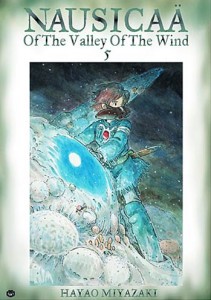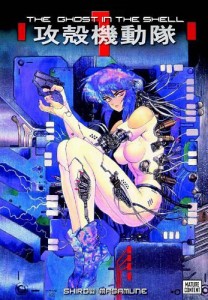SF Manga 101: Neon Genesis Evangelion
Glenn Hough (gallyangel) is a nonpracticing futurist, an anime and manga otaku, and is almost obsessive about finishing several of the lists tracked on WWEnd. In this series on SF Manga Glenn will provide an overview of the medium and the place of science fiction within it.
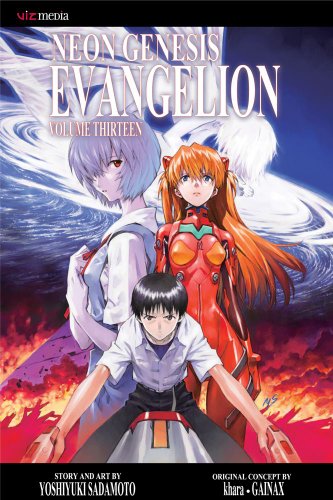 Abandon all hope, all ye who enter here!
Abandon all hope, all ye who enter here!
Neon Genesis Evangelion, or NGE, has been known to do things to people; it changes them. You have been warned.
When otaku start talking about the NGE anime, it’s normal to talk in clichés and you start to use words or phrases like ground breaking, shattering, stunning, mind-numbing complexity, totally awesome, Rei is so Moe, Or Baka! Shinji (You fool, Shinji!).
When the anime hit in 95 and 96 to say that it changed the face of anime and that it reforged the big giant mecha genre, is not an understatement or hyperbole. That’s what happened. But NGE didn’t just stop. The anime had several movies, which tied up the ending of the series, before moving on to a rebuild series of movies that clarified and distilled the major themes, concentrating and enhancing what was already there.
Now the manga is what we would call a novelization. And they’re still being produced, even after almost a lapse of 20 years. One of the leads from the anime is doing this. Yoshiyuki Sadamoto is sort of slow and there have been pauses in the production. That’s just the way it worked out. But this slowness has allowed the manga to follow it’s own process of distillation and clarification, making for a more concise rendering of the basic story line. I feel the manga stands by itself and is good enough for a top five placement in the SF manga pantheon.
SF Manga 101: Appleseed
Glenn Hough (gallyangel) is a nonpracticing futurist, an anime and manga otaku, and is almost obsessive about finishing several of the lists tracked on WWEnd. In this series on SF Manga Glenn will provide an overview of the medium and the place of science fiction within it.
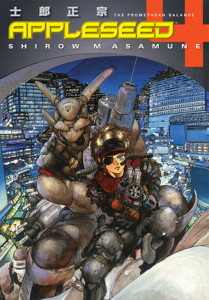 When I was charting out the mangas I’d be blogging about, my best of the best list, and why those mangas should matter to us, the SF reading public, Masumune Shirow found his way onto the list three times. Conversely, nobody else even got a second series. That’s the level of difference we’re talking about with Shirow.
When I was charting out the mangas I’d be blogging about, my best of the best list, and why those mangas should matter to us, the SF reading public, Masumune Shirow found his way onto the list three times. Conversely, nobody else even got a second series. That’s the level of difference we’re talking about with Shirow.
I find it highly ironic that the ideas for Ghost in the Shell (GITS) came out of Appleseed. And in my opinion, knocked Appleseed out of a top three slot for SF Manga. Not out of the top five, but out of the top three.
This is what the publisher says about the first volume of Appleseed.
World War III is over, and nomad soldier Duenan Knute and her cyborg partner Briareos struggle to survive in the abandoned cities and demilitarized zones of the post-war wasteland, the “Badside.” Matters appear on the upswing, however, when they are found and brought to Olympus, an urban utopia and centerpiece for the reconstruction of civilization. Duenan and Bri join the Olympus police, a force that seems hardly necessary in such a paradise. But, like in most pretty pictures, perfection is an illusion, and Olympus’s peaceful facade hides a dark secret, a violent struggle between human and cyborg that could once again plunge the world into war… and genocide.
SF Manga 101: The Melancholy of Haruhi Suzumiya
Glenn Hough (gallyangel) is a nonpracticing futurist, an anime and manga otaku, and is almost obsessive about finishing several of the lists tracked on WWEnd. In this series on SF Manga Glenn will provide an overview of the medium and the place of science fiction within it.
 And now for something completely different…
And now for something completely different…
I don’t know about you, but I need a change of pace. The things which the top three mangas (GITS, Nausicaa and Akira) have in common is that they’re all heavy, earthshaking, violent, bloody, and transformational. They’re all big, bold, and serious, very serious SF. And since I can barely agree with myself on the pecking order for the top three, trying to do a top ten seems like a doomed methodology. So, change of pace.
The Melancholy of Haruhi Suzumiya. This is what the publisher says about volume one, with my notes.
Kyon (1) is your ordinary high school freshman (2) who has long given up on his childhood dreams of encountering the fantastic and supernatural… or so he thought. From the very first day of school, his classmate – the beautiful but eccentric Haruhi Suzumiya – makes it very clear that her only desire is to meet aliens, time travelers, and espers! (3) A chance conversation between the two inspires Haruhi to form the SOS Brigade, (4) a school club created for the sole purpose of getting these supernatural beings together. The initial members consist of the mute bookworm Yuki Nagato, (5) the timid but voluptuous Mikuru Asahina, (6) and the polite and ever-smiling Itsuki Koizumi (7). But it isn’t long before Kyon realizes that Haruhi’s “helpless victims” are actually members of secret organizations – both futuristic and alien – keeping watch over Haruhi, as she is the pinnacle of some major calamity on the horizon (8)…
SF Manga 101: Akira
Glenn Hough (gallyangel) is a nonpracticing futurist, an anime and manga otaku, and is almost obsessive about finishing several of the lists tracked on WWEnd. In this series on SF Manga Glenn will provide an overview of the medium and the place of science fiction within it.
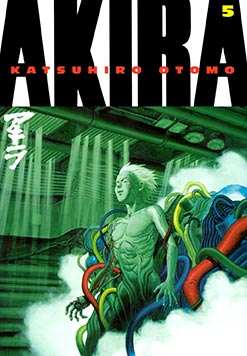 Oh, hello. I was just sitting here by the fire meditating on…well, ok. I was asleep. But I did think of something interesting to share before I get to Akira.
Oh, hello. I was just sitting here by the fire meditating on…well, ok. I was asleep. But I did think of something interesting to share before I get to Akira.
Nausicaa was originally published between February 1982 to March of 1994. Akira‘s original run was between December 1982 to June 1990. Ghost in the Shell’s initial release was between May 1989 to November of 1990.
I’ve maintained that Nausicaa, Ghost in the Shell (GITS), and Akira are the top three. This means that nothing published since ’94 has cracked the top three. Top five, yes. Top ten, absolutely. But not the top three. 18 years. I think that’s a long time to have no movement at that level. Nothing has come along which is that good, which is that important to SF. It’s an interesting observation for us to ponder.
Anyway, Akira. I’ve gotten the impression that of the mangas I’ve talked about in this series, it’s Akira that many of you might have heard of before. That Akira, much more so than GITS or Nausicaa, had a media punch behind it. It was a big deal way back when for the Epic/Marvel team to publish Akira. It was an even bigger deal for them to finish the series after several years of hiatus. So when Dark Horse says this about Akira, they say it with that big deal mentality:
SF Manga 101: Nausicaä of the Valley of the Wind
Glenn Hough (gallyangel) is a nonpracticing futurist, an anime and manga otaku, and is almost obsessive about finishing several of the lists tracked on WWEnd. In this series on SF Manga Glenn will provide an overview of the medium and the place of science fiction within it.
To a certain section of the population the name Hayao Miyazaki should be familiar. If you’ve ever paid any attention to the Oscars, especially in the animated feature category, the 2002 win by Spirited Away should leap to mind. Miyazaki was the director.
It is not a overstatement to say that Hayao Miyazaki is one of the gods of animation in Japan. He should be mentioned in the same sentence with early Disney and Chuck Jones. His movie My Neighbor Totoro has been compared to a perfect summers day; were both the movie and the day are equally, delightfully, plotless. It’s said of Spirited Away that it’s a reflection of the Japanese soul, which includes bathhouses, spirits, and the ever recurrent need of youth to find and embrace their courage in the world.
What does this have to do with SF Manga? It’s simple. In Miyazaki’s early days, he was the mangaka who slowly wrote and drew, taking 12! years, the manga that’s in second place on my list: Nausicaä of the Valley of the Wind.
Yes, the name of the title character comes directly from Homer’s Odyssey. Homer’s Nausicaä is a young princess. Miyazaki’s Nausicaä is a young princess. And that is where their similarities end.
SF Manga 101: Ghost in the Shell
Glenn Hough (gallyangel) is a nonpracticing futurist, an anime and manga otaku, and is almost obsessive about finishing several of the lists tracked on WWEnd. In this series on SF Manga Glenn will provide an overview of the medium and the place of science fiction in it.
Hi. Hi. Glad to see you again. Welcome. It’s practically time to say pull up a chair by the fire. It’s the dampness. That’s what gets me.
Since I know we can all go wiki-wiki and have all the summery one could want in seconds, I’d like to concentrate on the questions: why these mangas? Out of all of the possible SF mangas, why should we, why did I, pay attention to these?
Well, when it comes to the top SF mangas out there, I think the top three spots are basically agreed upon. Their order, however, is not. It’s a matter of personal appeal. Do you go for the ecological collapse and resource wars as humanity lives on in the twilight world of Nausicaa? Or do you go for the forced human evolution and the releasing of psychic powers which can not be controlled in Akira? Or do you go with the cyberpunk ethic, wrapped in a police procedural, which ends in something that looks very much like what the Kurzweil crowd would call the singularity in Ghost in the Shell?
Personally, I think Ghost in the Shell takes the top spot. Yes, definitely, all three have transformation at their cores but I think Ghost is more relevant as a motif for what the 21st century will be about.
SF Manga 101: An Introduction
Glenn Hough (gallyangel) is a nonpracticing futurist, an anime and manga otaku, and is almost obsessive about finishing several of the lists tracked on WWEnd. This is the first of Glenn’s new series on SF Manga where he’ll provide an overview of the medium and the place of science fiction in it.
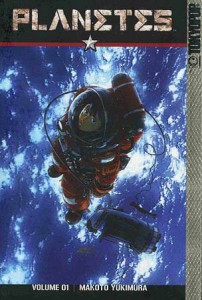 Hi. How are you? Welcome. Glad to see you. Welcome. Please, sit anywhere. Splendid. Splendid.
Hi. How are you? Welcome. Glad to see you. Welcome. Please, sit anywhere. Splendid. Splendid.
A bit ago one of our fearless leaders at WWEnd asked me if I’d like to do a blog concerning SF Manga. I guess he rather liked the short summaries I’d been doing over in the forum section, so why not expand things a bit for a blog? Sure, why not.
My hope is that as we all get more familiar with SF Manga that some of you will will soon have a copy of Nausicaa next to your copy of Dune. Or on your shelf will be The Demolished Man, next to Dying Inside, next to Akira. Or even, on the shelf next to that 1st Pantasia Press hardcover of Neuromancer (you lucky sod) will be a first run flipped and censored edition of Ghost in the Shell, followed by a second run unfliped uncensored edition of Ghost in the Shell. And hopefully each and every title I’ll be blogging about will gain a few more fans from my humble efforts.
But first I think we need an intro to help lay out the landscape we’re going to be traversing together. This is the common starting point, just in case someone is coming to all of this totally cold as I’m sure some of you are.
Manga is the Japanese word for comic book or comic strip. It’s used in America to denote comics specifically from Japan. It also denotes an artistic style. There is a very different visual style between Japanese and American comics.



















 Full Details
Full Details
